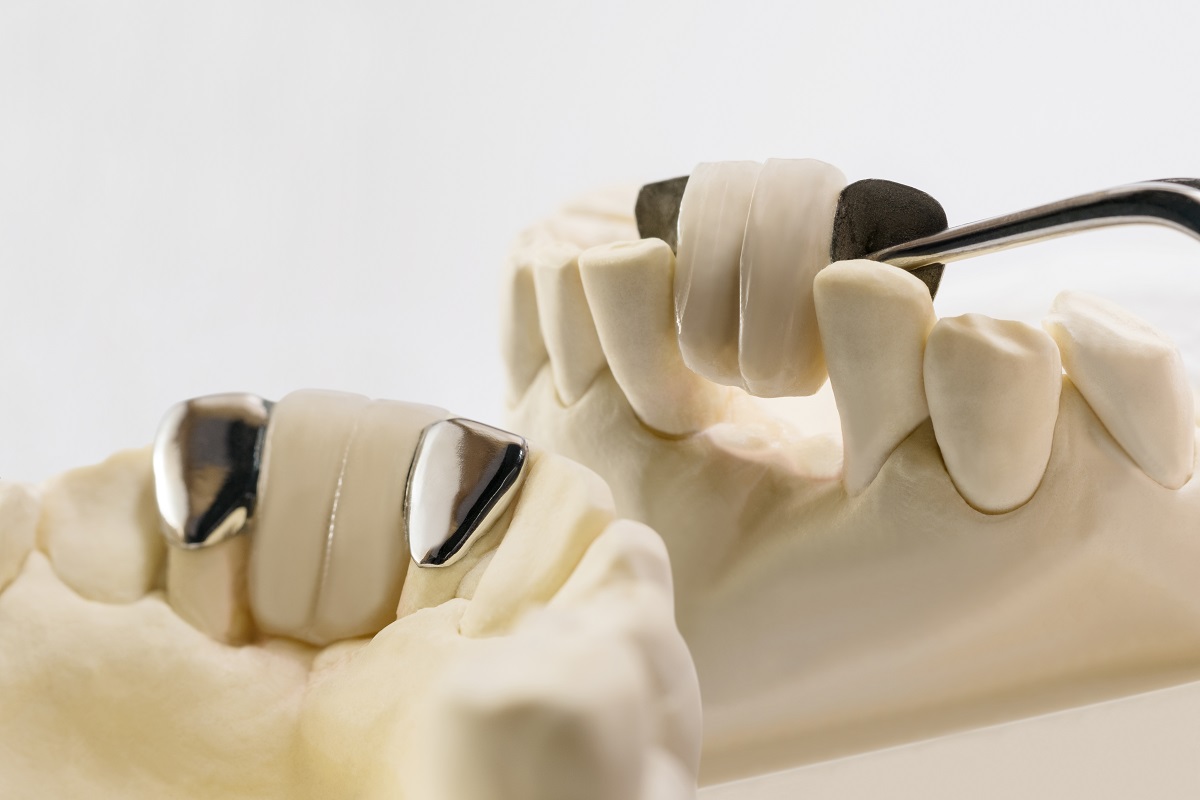4 Types of Dental Bridges

4 Types of Dental Bridges
What are the types of dental bridges?
- Traditional
- Cantilever
- Maryland
- Implant-supported
In case of tooth loss, your dentist might recommend a dental bridge to remedy the problem. They can help fix the gap by applying a false tooth that is bonded to the neighboring teeth. This prevents the replacement tooth from shifting and gives you a natural-looking smile. But depending on your needs and preferences, your doctor might discuss various dental bridge types. Keep on reading to learn more!
Traditional

If you have healthy teeth at the sides of your missing tooth, your dentist might recommend traditional fixed bridges. This is also the most common type of dental bridge used for restoring lost teeth and is typically made of porcelain fused to metal.
Before cementing a traditional bridge, your dentist will reduce the teeth located at both sides of the gap. This way, the replacement crowns can be bonded to the existing teeth, ensuring a stable and strong bridge. Your doctor can apply a local anesthetic to numb the teeth before reducing them. In some cases, the adjacent teeth may be filled in to make it big enough to fit the crown.
The advantage of traditional fixed bridges is their ability to provide a reliable biting force. The piece is also lightweight and small, so it is easy to get used to after the procedure. With proper hygiene care and regular dentist appointments, the bridge can last a long time.
Cantilever
A cantilever bridge is similar to a traditional bridge and it is held in place by only one anchor tooth next to the gap. But compared to the previous type, it is held in place by only one anchor tooth next to the gap. Your dentist might not recommend this type for the back of the mouth because it will be exposed to strong biting forces.
The cantilever bridge procedure is similar to having traditional fixed bridges applied. Your dentist will need to reduce the adjacent tooth by removing the enamel. It’s cemented on the teeth reduced to strengthen the support.
When having a cantilever bridge applied, it is recommended to treat it with extra care because only one side supports the restoration. Keep up with good oral hygiene through flossing and brushing so you can remove food particles and bacteria that can cause tooth decay.
Maryland

If you lose one of your front teeth, one of the best solutions is to have it restored through a Maryland dental bridge. It utilizes healthy teeth on each side of the gap to support the replacement tooth. But instead of crowns, it uses a framework referred to as “wings”—which are fixed behind the anchor teeth. Because of this, it is also known as the “winged bridge” and is a more conservative procedure.
The advantage of Maryland bonded bridges is the minimal tooth preparation required. It doesn’t require major reshaping because the wings are fitted behind the neighboring teeth. This means that you can expect less chance of sensitivity too.
To know if you’re qualified for a Maryland bridge, it is best to schedule a consultation with your dentist. It might not be a viable option for people with deep bite or crossbite.
Implant-Supported
In case you have more than one missing tooth, your dentist might recommend an implant-supported bridge. They will surgically place a dental implant in your jawbone to hold the bridge in place. When an implant can’t be installed for every missing tooth, there might be one suspended tooth held in place by two adjacent implant-supported crowns.
With implants, there is a possibility of restoring two or more missing teeth in a row. It doesn’t need the support of neighboring teeth which means that your natural tooth will stay as-is. Dental implants act as a tooth root by becoming a part of your jawbone structure so the restoration can be held firmly in place.
Compared to traditional fixed bridges, implant-supported bridges might require multiple dental visits. The dental implant process requires multiple appointments spread out over a three to six-month period, so patience is key. As long as you take care of your implants properly, they can last a lifetime.
Key Takeaway
Depending on the number of your missing tooth, the location of the gap, and your dentist’s recommendation, the type of dental bridge suitable for you might vary. But all choices can help restore your smile, retain your ability to properly chew, prevent speech problems, and maintain the shape of your face. It also prevents the adjacent teeth from shifting out of their position!
If you want to know the dental bridge types offered at Casipit Dental Group, you can send a message today! You can schedule an appointment at one of our branches in Metro Manila or Pangasinan so our experienced dentists can recommend the best option for you.












